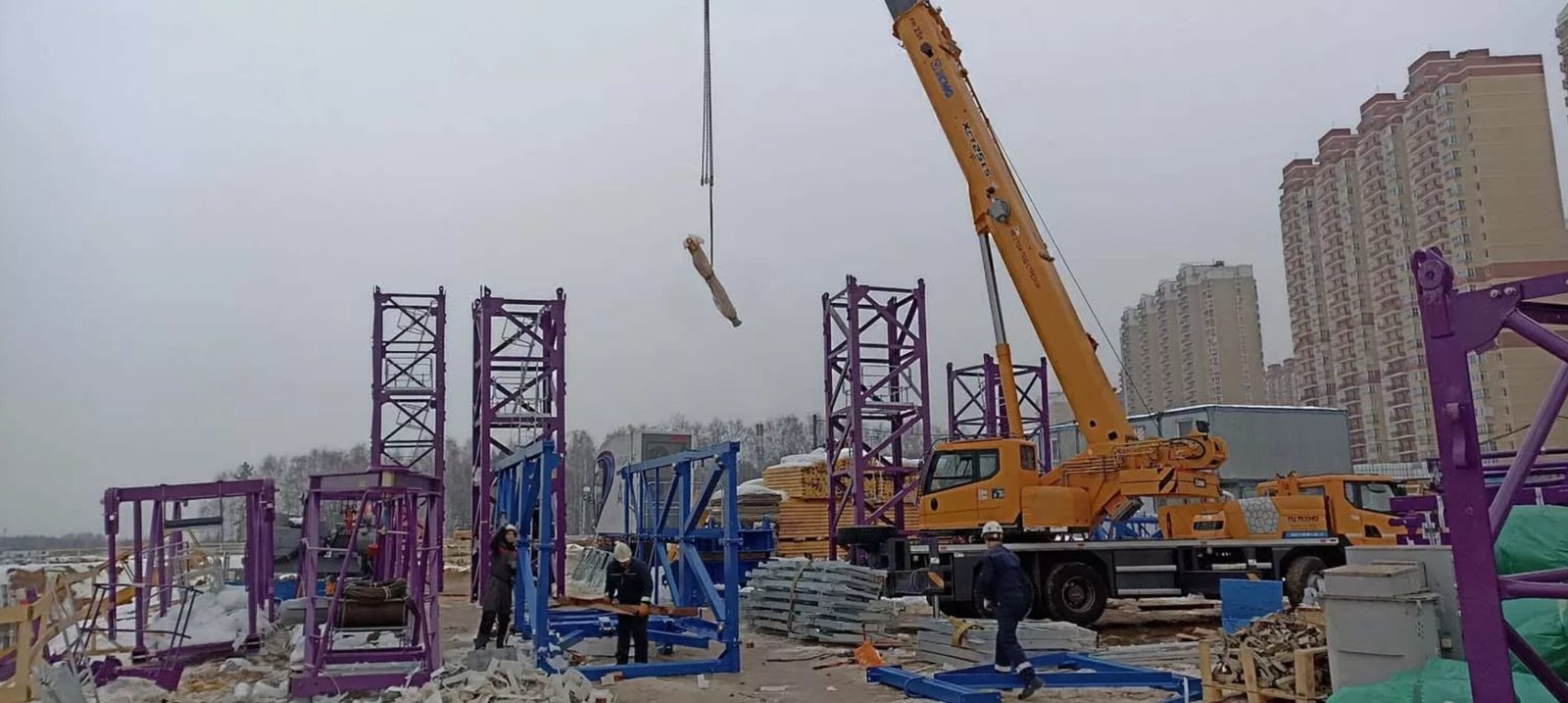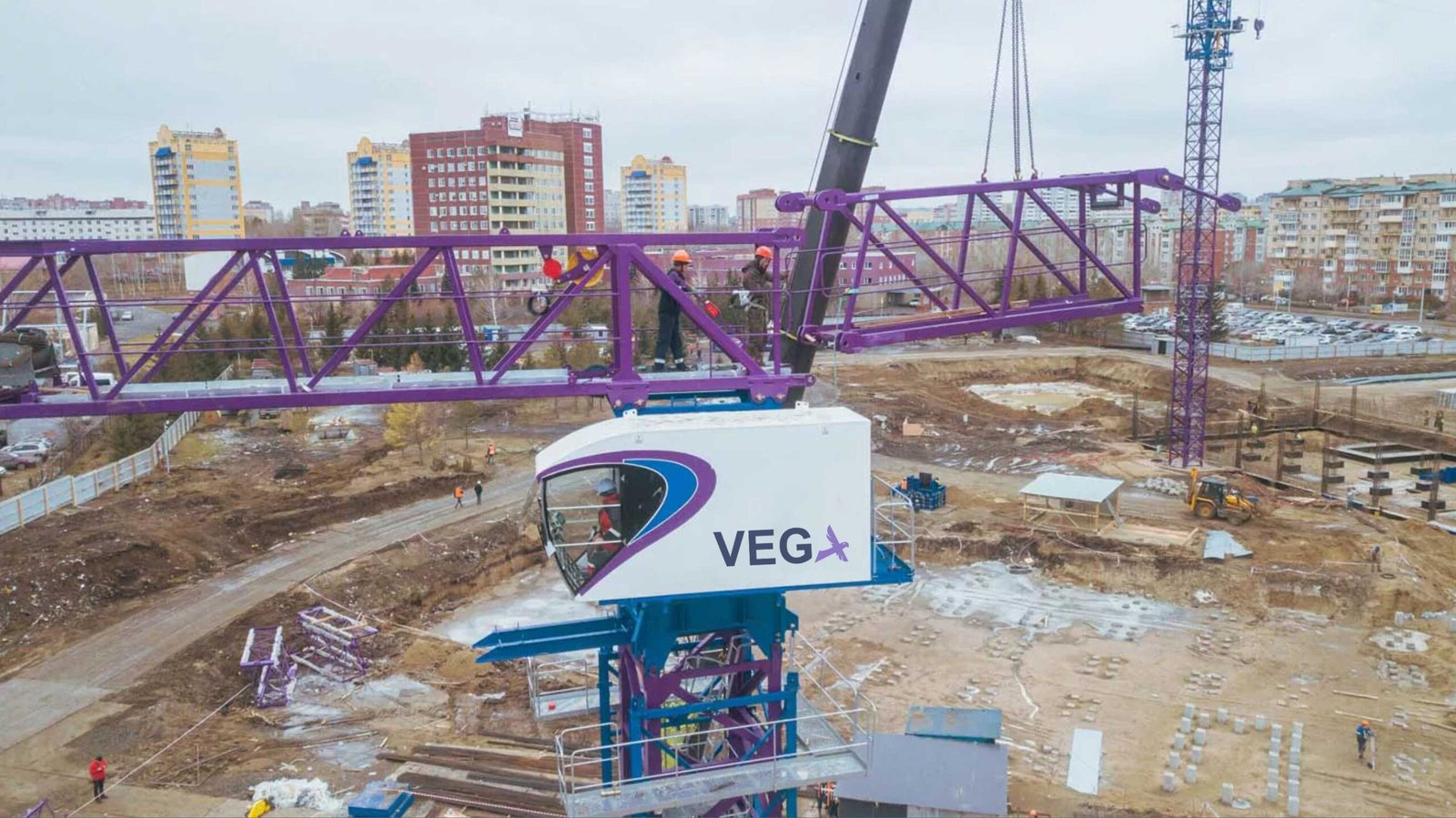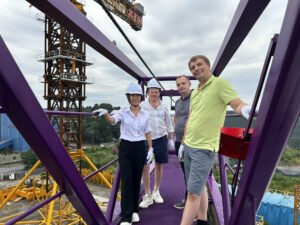
Tower cranes are massive, towering structures on construction sites. But how do these colossal machines get from one place to another? Let's explore how tower cranes are transported, erected, and dismantled.
Tower cranes are transported in parts, then assembled on-site, allowing them to move across construction sites and be adapted to specific project needs.
Transporting a tower crane involves disassembling it into smaller, manageable parts. Once on-site, the crane is carefully assembled and calibrated to ensure its stability and efficiency.
How Do Cranes Get Placed?

Placing a tower crane on a construction site sounds simple, but it requires careful planning and execution. How is it done?
Cranes are placed on a secure foundation and carefully assembled using smaller cranes, often with the help of other lifting machinery.
Cranes are typically placed on a concrete foundation1 or mat, which ensures their stability. Smaller cranes or mobile cranes2 are often used to lift the individual parts of the tower crane, including the mast, jib, and counterweights, and position them accurately on the foundation.
Steps to Place a Tower Crane
- Foundation Preparation: A solid concrete slab or foundation is poured and reinforced.
- Lifting the Crane Parts: A smaller crane or mobile crane is used to lift the tower crane's components into place.
- Assembly: The tower crane is assembled piece by piece, with each section carefully bolted into position.
- Final Inspection: The crane is thoroughly inspected before being used for heavy lifting.
| Step | Description |
|---|---|
| Foundation | Concrete or reinforced base to secure the crane |
| Lifting Parts | Smaller cranes lift sections of the tower crane |
| Assembly | Pieces are carefully put together on-site |
| Inspection | Ensures the crane is stable and operational |
The process of placing a tower crane requires precision and careful handling of all parts to ensure safety.
How Long Does It Take to Take Down a Tower Crane?

Dismantling a tower crane is no small task. How long does it actually take to take one down?
Taking down a tower crane can take anywhere from a few hours to a full day, depending on the crane's size and complexity.
The time it takes to dismantle a tower crane depends on several factors, including its height, the type of crane, and the tools available. Typically, it can take anywhere from 8 to 24 hours to disassemble a crane. The process requires specialized equipment3 and safety measures to ensure everything is done correctly.
Steps for Taking Down a Tower Crane
- Preparation: All materials and equipment for dismantling are gathered.
- Disassembly: The crane is taken apart piece by piece, starting with the jib and counterweights.
- Lowering the Mast: The crane’s mast is carefully lowered in stages.
- Removal: The crane is fully disassembled, and all parts are transported off-site.
| Step | Description |
|---|---|
| Preparation | Gather necessary tools and equipment |
| Disassembly | Dismantle crane parts starting with lighter sections |
| Lowering the Mast | Mast sections are lowered carefully using cranes |
| Removal | Final removal of all parts, cleared from the site |
While dismantling a tower crane requires time and precision, it’s a crucial part of safely removing large equipment from a construction site.
How Are Tower Cranes Erected and Dismantled?

The erection and dismantling of tower cranes are key aspects of their operation. So how is this intricate process carried out?
Tower cranes are erected and dismantled using smaller cranes or hydraulic jacks, in a carefully planned sequence to ensure safety and efficiency.
Erecting and dismantling a tower crane involves a combination of hydraulic jacks, smaller cranes, and careful coordination. The process typically starts with assembling the crane's base and ends with the installation or removal of its mast and counterweights.
Erection and Dismantling Process
- Erection: The crane parts are delivered to the site and assembled with the help of mobile cranes4.
- Climbing Mechanism: In some cases, the crane is "climbed" to increase its height as the building goes up.
- Dismantling: Once the project is finished, the crane is carefully disassembled in reverse order, with a smaller crane used to remove the parts.
| Step | Erection | Dismantling |
|---|---|---|
| Foundation | Set up a solid foundation for the crane base | Prepare for dismantling and ensure safety |
| Assembly | Lift parts using smaller cranes or mobile cranes | Disassemble the crane parts piece by piece |
| Climbing | Add additional mast sections as the building rises | Remove mast sections starting from the top |
| Final Setup | Ensure all crane parts are securely installed | Transport disassembled parts off-site |
The erection and dismantling process must be executed with precision to avoid accidents and ensure the crane is fully operational during its time on-site.
How Are Tower Cranes Controlled?
<img src="https://vega-crane.com/wp-content/uploads/2025/03/oprerator.jpg "Crane control, operator />
Tower cranes may seem like massive, stationary structures, but they require skilled operators to control them. How is this done?
Tower cranes are controlled by operators who use a control panel in the cab to move the crane’s jib, hoist, and rotate the mast.
Tower crane operators control the crane’s movements from a cab that’s usually located at the top of the mast. From there, they can use a variety of controls to move the jib, hoist, and rotate the crane. The control panel allows the operator to lift, lower, and move heavy materials with precision.
Controls of a Tower Crane
- Jib Movement: The operator can control the horizontal arm (jib) to position materials.
- Hoisting: The crane’s hoist is used to lift and lower loads.
- Rotation: The crane's mast can rotate 360 degrees to position loads around the construction site.
| Control Type | Function |
|---|---|
| Jib Movement | Moves the crane's arm horizontally to position loads |
| Hoisting | Lifts and lowers materials with precision |
| Rotation | Rotates the crane's mast to position materials |
With the right skills and knowledge, tower crane operators ensure that materials are placed exactly where they’re needed on construction sites.
Conclusion
Tower cranes are transported and erected through a well-planned process, involving disassembly, transport, assembly, and precise control. Their role in construction is invaluable, and their management requires careful coordination to ensure safety and efficiency.
- Understand why a stable foundation is essential for tower crane safety and stability. ↩
- Learn about the different types of cranes used for lifting and assembly in construction. ↩
- Discover the tools and machinery involved in safely disassembling tower cranes. ↩
- Find out how mobile cranes are crucial for assembling tower cranes on-site. ↩



